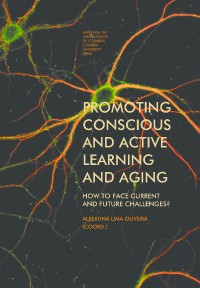Please use this identifier to cite or link to this item:
https://hdl.handle.net/10316.2/32530| Title: | Architeture for active learning and aging: towards open innovation in universities | Authors: | Calvo-Sotelo, Pablo Campos | Keywords: | University;Campus;Higher Education;Architecture;Innovation;Active Learning and Aging | Issue Date: | 2013 | Publisher: | Imprensa da Universidade de Coimbra | Journal: | http://hdl.handle.net/10316.2/29856 | Abstract: | Open innovation in Universities should be founded on several principles: Education is an affective act (implying special attitudes between faculty and students); Education is a collective act (a community of learning generates more knowledge than the individuals): Education is a sustained act (an activity linked to active learning and ageing); Education is a spatial act (human contact is necessary to achieve a complete formation for future citizens, beyond their achievement of mere technical abilities). To achieve these goals, this paper proposes the philosophy of the “Educational Campus”, a modern paradigm that can be applied to transformation processes of Institutions of Higher Education. Actually, this conceptual tool has been used by the Spanish Ministry of Education in the Program “International Campus of Excellence”, since its first edition in 2009. Excellence in Universities must be based on the main principle of the “Educational Campus”: that the human contact that makes Education possible must take place in a real location. Consequently, it is necessary to underline the critical role that Architecture has to play in the evolution of Universities towards innovation, as it hosts the human contact needed to achieve the true mission of Universities: the integral formation of a human being. The “Educational Campus” has the capacity of fostering open innovation processes at four scales: relation between University, city and territory; the campus as an independent complex; the building as an architectural piece; and finally, the classroom, as the basic learning spatial unit. Overall, the quality of Universities is intimately tied in with human attitudes, but also with the quality of its Architecture. Through sound planning (using the “Educational Campus” paradigm), Universities can improve the nature of their spaces, transforming them into sites where innovative teaching and learning modalities can be hosted, as well as places to invite citizens of all ages to keep on participating through all their lives in the fascinating task of education. | URI: | https://hdl.handle.net/10316.2/32530 | ISBN: | 978-989-26-0732-0 (PDF) | DOI: | 10.14195/978-989-26-0732-0_15 | Rights: | open access |
| Appears in Collections: | Promoting conscious and active learning and aging: how to face current and future challenges? |
Files in This Item:
| File | Description | Size | Format | |
|---|---|---|---|---|
| promoting_artigo15.pdf | 516.69 kB | Adobe PDF |  |
Items in DSpace are protected by copyright, with all rights reserved, unless otherwise indicated.
